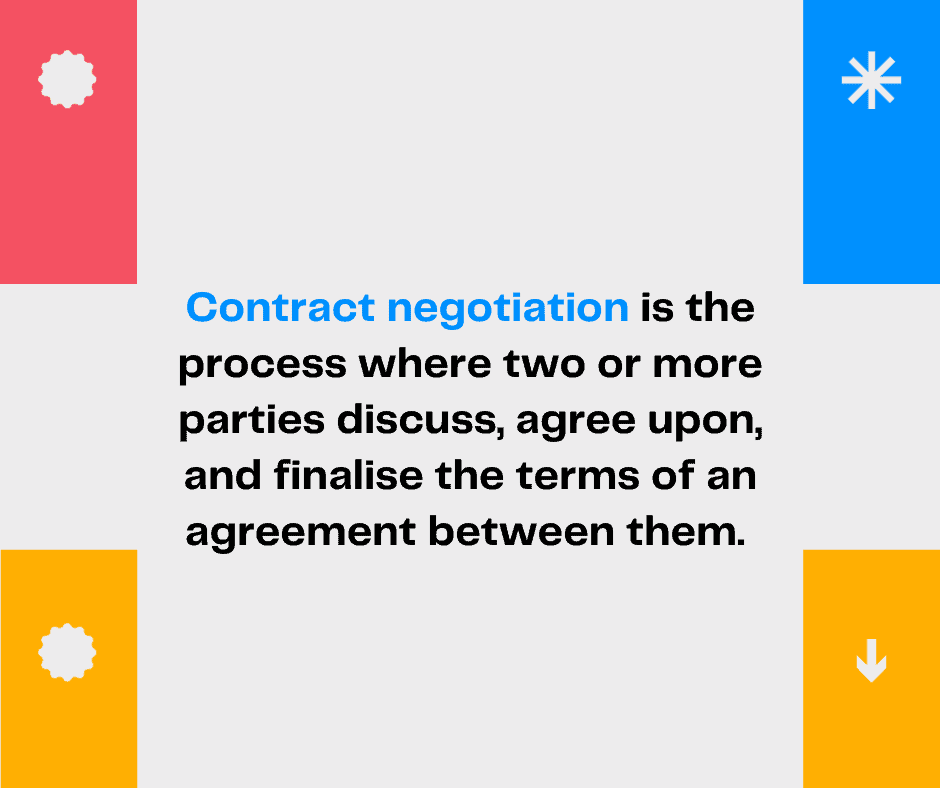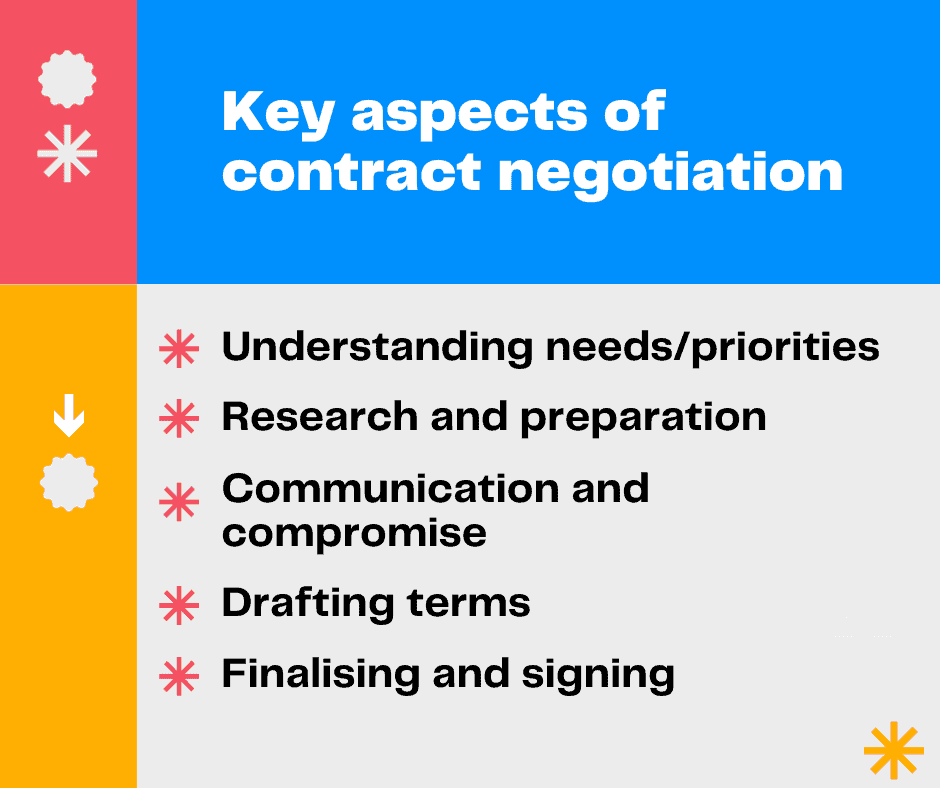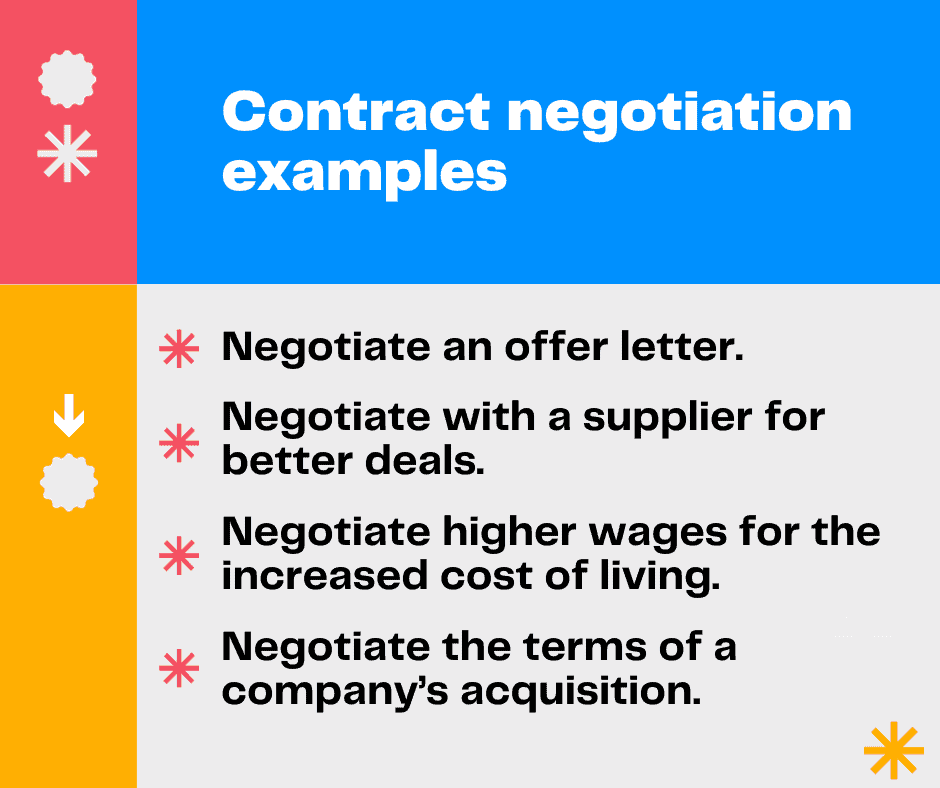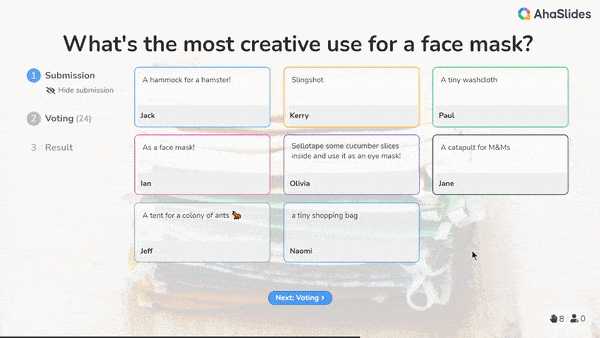What is contract negotiation? Whether just starting out in business or a big shot with deals, those meetings where you discuss the terms and negotiate the benefits can make anyone sweat a bucket.
But it doesn't have to be so tense! When both sides do their homework and understand what really matters, a win-win solution becomes possible.
👉 In this article, we'll break down the nuts and bolts of contract negotiation, and share some handy tips for wrapping things up satisfied on both sides.
Table of Contents
- What is Contract Negotiation?
- Contract Negotiation Examples
- Contract Negotiation Strategies
- Contract Negotiation Tips
- Key Takeaways
- Frequently Asked Questions
Tips for Better Engagement

Looking for More Fun During Gatherings?
Gather your team members by a fun quiz on AhaSlides. Sign up to take free quiz from AhaSlides template library!
🚀 Grab Free Quiz☁️
What is Contract Negotiation?

Contract negotiation is the process where two or more parties discuss, agree upon, and finalise the terms of an agreement between them.
The goal is to come to a mutually acceptable contract through the negotiation process.
Some key aspects of contract negotiation include:

Contract Negotiation Examples

When exactly do you need to negotiate a contract? See these examples below👇
• A prospective employee is negotiating an offer letter with a growing startup. She wants equity in the company as part of her compensation but the startup is reluctant to grant large ownership stakes.
• A startup is negotiating with a large supplier to get better pricing and payment terms for manufacturing their new product. They have to leverage their growth potential to gain concessions.• A freelance developer is negotiating a contract with a new client to build a custom website. She wants a high hourly rate but also understands the client's budget constraints. Compromise may include deferred payment options.• During union negotiations, teachers aim to get higher wages for the increased cost of living while the school district wants more flexibility in evaluations and class sizes.• An executive is negotiating an enhanced severance package before agreeing to resign from a mid-size company that is being acquired. He wants protection if his new position is eliminated within a year of the acquisition.Contract Negotiation Strategies
Having a detailed strategy planned out will help you get the upper hand in the contract. Let's go over the details here:
💡 See also: 6 Successful Time-Tested Strategies for Negotiation
#1. Know your bottom line

Research your counterparties. Learn about their business, previous deals, priorities, decision-makers, and negotiating style before negotiations begin.
Understand who has the final say and tailor your approach to their priorities rather than assuming one size fits all.
Thoroughly understand industry standards, the other party's position, and your BATNA (Best Alternative To Negotiated Agreement).
While reviewing the opposing party's stance, brainstorm all their potential demands or requests. Knowledge is power.

#2. Draft the contract

Craft your ideal version of the contract to use as a starting point.
Use clear, unambiguous language throughout. Avoid undefined terms, vague phrases, and subjective criteria that could lead to misinterpretation. You and use an expert's help to prepare a concrete contract.
Include mandatory and discretionary terms distinctly. Label obligations as "must", or "shall", versus options stated as "may" to avoid confusion.
Address foreseeable issues proactively. Add protective clauses for contingencies like delays, quality issues, and termination to avoid future disputes.
Careful drafting helps capture exactly what was negotiated to the satisfaction of all parties.
#3. Negotiate

While negotiating with the opposite party, listen actively. Fully understand the other side's needs, constraints, and priorities through asking questions.
From what you've listened, build rapport and find common ground and interests through respectful dialogue to get the relationship on a positive note.
Compromise wisely. Search for "expanding the pie" solutions through creative options vs. win-lose positioning.
Repeat important understandings and any agreed changes to avoid ambiguity later.
Make small concessions to build goodwill for more significant ones on bigger issues.
Use objective standards. Cite market norms, past deals, and expert opinions to turn "wants" into "shoulds", followed by proposing alternatives to stimulate creative discussions.
Stay calm and solution-focused through discussions to maintain a productive atmosphere. Avoid personal attacks specifically.
#4. Wrap up clearly

After the two parties have reached an agreement, make sure to repeat agreements verbally to avoid written contract discrepancies later.
Keep detailed notes of agreements to reduce any chance of misunderstandings.
Establish timeframes for decision-making to keep negotiations focused and on track.
With careful planning and cooperative strategy, most contracts can be negotiated to mutual benefit. Win-win is the goal.
Contract Negotiation Tips

Negotiating a contract not only involves technical terms and expertise but also requires people skills. If you want your contract negotiation process to go easy-breezy, remember these golden rules:
- Do your research - Understand industry standards, the other parties, and what's truly important/negotiable.
- Know your BATNA (Best Alternative To Negotiated Agreement) - Have a walkaway position to leverage concessions.
- Separate the people from the problem - Keep negotiations objective and cordial without personal attacks.
- Communicate clearly - Listen actively and convey positions/interests persuasively without ambiguity.
- Compromise where reasonable - Make measured concessions strategically to get concessions in return.
- Look for "win-wins" - Find mutually beneficial trades vs. winner-take-all competition.
- Confirm verbally - Reiterate agreements clearly to avoid misinterpretation later on.
- Get it in writing - Reduce oral discussions/understandings to written drafts promptly.
- Control emotions - Stay calm, focused and in control of the discussion.
- Know your limits - Have bottom lines set in advance and don't let emotions push past them.
- Build relationships - Develop trust and understanding for smoother negotiations in the future.
Key Takeaways
Negotiating contracts will not always come in your favour but with proper and thorough preparation, you can turn stressful meetings and frowned faces into partnerships that build to last.
Frequently Asked Questions
What are the key areas of contract negotiation?
Some of the key areas that are typically negotiated in a contract are price/payment terms, scope of work, delivery/completion schedule, quality standards, warranties, liability and termination.
What are the 3 C's of negotiation?
The three main "C's" of negotiation that are often referenced are Collaboration, Compromise and Communication.
What are the 7 basics of negotiation?
The 7 basics of negotiation: Know your BATNA (Best Alternative To Negotiated Agreement) - Understand interests, not just positions - Separate people from the problem - Focus on interests, not positions - Create value through expanding options - Insist on objective criteria - Leave pride at the door.








